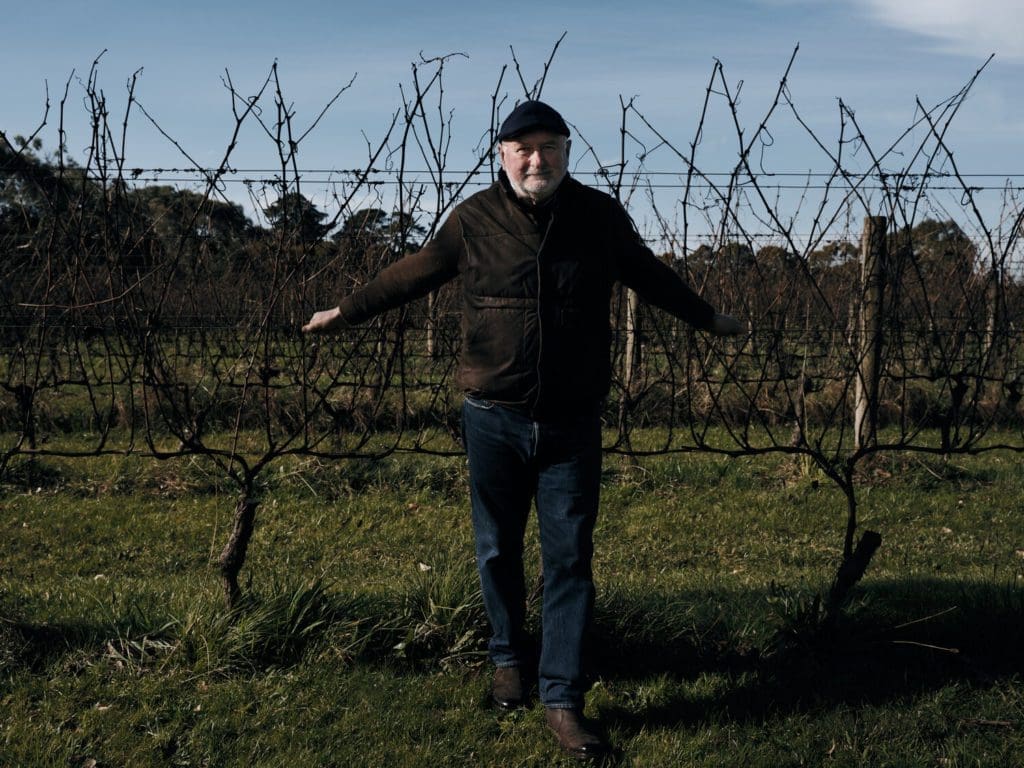Share This Article
I only recently reviewed the 2020 Hurley Lodestone Pinot Noir (see below) which rated 96/100 but as 2023 marks the 21st birthday for Hurley Vineyard and as a big fan of the wines I was extremely keen to see how this release is tasting.
As I write this I have not found any other reviews online there are not even any reviews on vivino yet, the wine has only been released to friends and those on the mailing list, so ultimately we will see if wine reviewers and punters agree with this assessment.

THE VINEYARD

As you might recall if you read the previous review, Hurley Vineyard has three established vineyards on Victoria’s Mornington Peninsula. They wrap around the crest of a small volcanic hill each block with slightly different aspects and all planted with different clones of pinot noir. The Lodestone Block was planted in 1999 and comprises 1.4 ha with a northerly aspect facing direct sun so it often ripens ahead of the other vineyards. The former volcano left a lot of magnetite (an iron mineral) in the vineyard soil, according to Kevin Bell, “it has more rock and stones in the soil than Hommage and Garamond. Ripeness is never a problem here. It has the modern Dijon clones 114, 115 and 777, and the wonderful MV6″. The vineyard was 90% planted in 1999 (with clones 114, 115 and MV6). The final 10% planted in 2004 with the pinot clone 777.
VITICULTURE & VINTAGE
Vines at Hurley are dry grown and farmed organically which has as they continue to mature has provided them with considerable natural resilience. The 2021 season delivered cool and wet weather in spring which delivered reasonable fruit set and produced good sized uniform bunches. However volume was down 25%. Increased rainfall can be a positive for non-irrigated vineyards, the vine canopies were ample and healthy and as the rain events were often followed by prolonged periods of mild and dry weather little disease occurred.
A mild summer without any heat waves allowed a very gentle ripening of the fruit, which was hand picked on 16th and 17th of March, quality was graded as ‘magnificent’ however as mentioned before there was a significant (25%) drop in the average yield.

WINE MAKING
Winemaking after harvest starts by cooling the intact fruit down in the overnight air, then it is de-stemmed (not crushed yet) and moved to open-topped fermenting vats in the cool of the early morning. The intact berries are gently soaked in their own juice for about seven days before fermentation begins. This gentle poaching is designed to gently macerate and maximise the extraction of flavour. Over the next fortnight indigenous yeasts commence fermentation and the wines are hand plunged twice daily and left on skins. The wine is then basket pressed and matured in French oak barrels of 228L (one quarter new oak), mainly from the forest of Troncais, for 20 months to ensure the wine undergoes further malolactic fermentation in barrel. It is racked under gravity only once before bottling, the lees contact promoting roundness and richness in the wine. It is bottled without filtration or fining. It spends about 6 months in bottle before release and is closed with a Diam cork.

TASTING NOTES
The colour is bright a burnt ruby red, clear and brilliant. The nose (a little more gentle than the 2020) is still a rich complex layered series of aromas, I immediately got that plum and jasmine fragrance that I associate with pinot noir from the Mornington Peninsula. On the palate this wine is more restrained than the last couple of years, there is not the same wallop of flavour, rather this wine is tight which translates to being delicate and gentle to drink now. The finish persists with good length and nicely integrated balance of tannin and acidity. The classic pinot noir characteristics are all there in sour black cherries, mushroom and a little funk, yet at this stage I am left wanting more, I loved the richness and delicate slightly ethereal fruit forward nature of the 2020 release, the 2021 remained too tight, its perfume and flavours closed away perhaps a double decant might have helped but ultimately this wine needs more time.
IMHO this is fine a wine that needs time in the bottle probably a couple more years for the flavours to really mature further, while it is drinking fine now – this could be magic in 2027 (I will keep a bottle aside and let you know). 93/100 points
FACTS
Grape | Pinot Noir 100%
Oak | French Oak 20 months
Seal | Diam Cork
Production | 3,936 bottles
pH | NA
Acidity | NA
Alcohol | 13.2% ABV
Residual Sugar | NA
Drink By | 2035
Tasting Date | May 2023
Price | $80 AUD

REVIEWS & AWARDS
- 93/100 points – James Campbell | Almanak Magazine
LINKS





